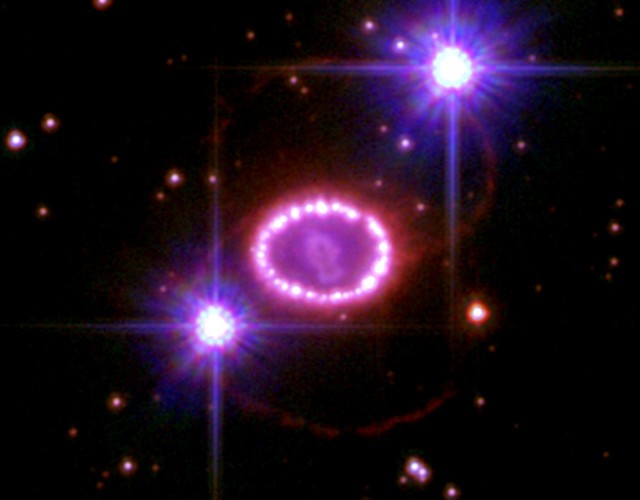X-rays highlight the power source produced by a supernova
Ars Technica » Scientific Method 2012-10-23

Supernova 1987a stands as the best-studied explosion of its type. Thanks to its location in the nearby galaxy known as the Large Magellanic Cloud (LMC), astronomers have been observing it starting with the first moments after the explosion. As a result, its remains provide some of the best tests of our ideas about supernova explosions, which produce and distribute many of the heavy elements required for planet formation and life.
But a number of the elements typically synthesized in supernovae are unstable and decay over the months and years that follow, filling the debris remnant with energy and keeping it bright long after the energy from the initial explosion has dissipated. In particular, the decay of a radioactive isotope of titanium produced generated in supernova remnants is thought to be responsible for much of the optical, infrared, and ultraviolet light astronomers record. New X-ray observations have now revealed the decay of titanium in a supernova directly, and found it to be sufficient to power much of the emission in the years immediately following the explosion.
S. A. Grebenev, A. A. Lutovinov, S. S. Tsygankov, and C. Winkler also found there was more titanium in the supernova remnant SNR 1987a than expected from theory. Though the range of possible values overlapped the theoretical maximum, the authors suggested it may be necessary to reexamine details in the physical models of nuclear fusion during supernova explosions. These results provided the best data so far for the physical conditions in supernova remnants, including how they produce and disperse heavier elements into interstellar space.
Read 6 remaining paragraphs | Comments